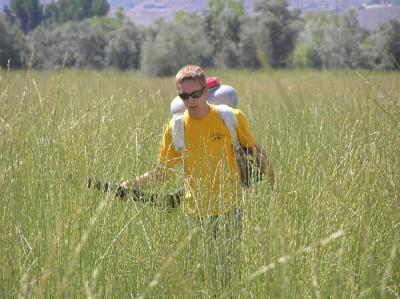 LARVAL CONTROL
By almost exclusively relying on larval control, t
LARVAL CONTROL
By almost exclusively relying on larval control, the Grand River Mosquito Control District has the distinction of operating an environmentally friendly program. This results in the long-term elimination of mosquitoes.The process involves the continuous identification, and monitoring of accessible mosquito breeding sites, for larvicide application. Numerous breeding sites consist of permanent or temporary bodies of standing water: flooded irrigation fields, ponds left behind receding river currents, marshes, swamps, woodland pools, ditches, storm water retention ponds, catch basin, storm drains, tire piles and sewage ponds. Some breeding sites escape control because of the lack of safe ground access, or because they are difficult to detect.
The District applies ecologically-friendly microbial larvicides and growth regulators directly, to breeding sites. Microbial larvicides contain protein toxins that are eaten by mosquito larvae, causing them to die within two days. Microbial larvicides are naturally occurring soil bacteria. And
DO NOT pose a risk to humans, wildlife, non-target species, or the environment. Methoprene is a compound which mimics the action of an insect growth regulating hormone, and prevents adult mosquito emergence. Methoprene degrades quickly in water and does not bio-accumulate.
For a list of larvicides used in the District, visit the
Product Labels page.


 LARVAL CONTROL
LARVAL CONTROL